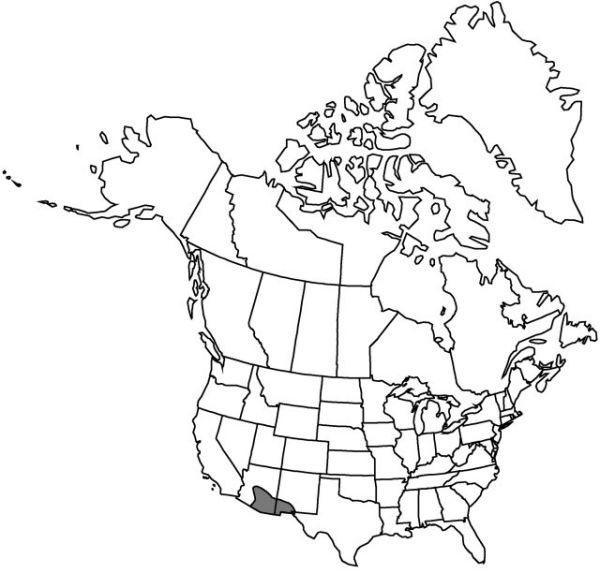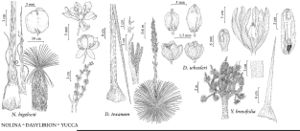Difference between revisions of "Dasylirion wheeleri"
Rep. U.S. Geogr. Surv., Wheeler, 272. 1878.
FNA>Volume Importer |
FNA>Volume Importer |
(No difference)
| |
Revision as of 21:45, 16 December 2019
Plants robust, with large crowns, to 40 cm diam.; trunks to 1.5 m, usually reclining. Leaves stout, rigid; blade whitish or bluish green, 35–100 × 2–3 cm wide above broadened base, densely waxy-glaucous, papillose, dull; prickles all antrorse. Inflorescences often massive, to 5 m; stalk 3–6 diam. at base; branches lateral, pendent in fruit, 3–10 cm; bracts wedge-shaped, attenuate; fascicles of flowers spreading, 10–20 cm from base to tip; primary axes 4–14 cm. Flowers with receptacles 0.2–0.5 mm; tepals sometimes tinged purple, 2.4 × 1–1.5 mm; style 0.2–0.3 mm, becoming swollen and golden brown in fruit; stigma lobes 0.4 mm; pedicel 3–3.5 mm in fruit. Capsules broadly obovoid or rounded in cross section, not indented, 5–8 × 4–5(–7) mm; distal wing lobes 2–2.5 mm, often indented on side. 2n = 38.
Phenology: Flowering mostly late May–Jun.
Habitat: Open, rocky slopes
Elevation: 1200–1900 m
Distribution

Ariz., N.Mex., Tex., Mexico (Chihuahua, Sonora).
Discussion
Morphologically, Dasylirion wheeleri is fairly uniform within its range in the United States, with some minor variation in fruit size and receptacle length.
Selected References
None.
